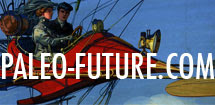
After reading
Gizmodo's interview with a technosexual I thought it was as good a time as any to look at an article from the July-August, 1997
Futurist about sex with robots.
Joel C. Snell wrote a piece called, "Impacts of Robotic Sex," which describes many of the same reasons for wanting a robotic sex partner as Zoltan does in the
Gizmodo article. Alimony, disease, and a sense of shifting cultural norms all lend themselves to a tone of inevitability in both pieces. The more tomorrow changes, the more it stays the same. The
Futurist magazine article appears below in its entirety.
(The robot to the right is a painting my girlfriend,
Malorie Shallcross, did for Valentine's Day.)
Robots that provide sexual companionship are likely to become common in the future. Prototype models have already been reported from Japan.
The future "sexbots" will have humanlike features and will be soft and pliant, like the latest dolls for children. Sexbots will contain vibrators to provided love talk.
Sexbots will be disease free; they won't judge one's sexual performance, and they won't say no. They will never have a headache or demand alimony.

They could certainly alter human relations. Here are a few potential impacts of sexbots:
Marriages may be destroyed by sexbots. A husband chooses sex with the sexbot, alienating his wife; the jealous wife destroys her sexbot rival and sues the manufacturer.
Individuals may change gender orientation. Heterosexual people may use a same-sex sexbot to experiment with homosexual relations. Or gay people might use other-sex sexbots to experiment with heterosexuality.
Robotic sex may become addictive. Sexbots would always be available and never say no, so addictions would be easy to feed. People may become obsessed by their ever faithful, ever pleasing sexbot lovers and rearrange their lives to accommodate their addictions. Eventually, support groups will likely form.
Technovirgins will emerge. An entire class of humans may emerge who not only will never have sex with other humans, but won't even desire it.
Robotic sex may become "better" than human sex. Like many other technologies that have replaced human endeavors, robots may surpass human technique; because they would be programmable, sexbots would meet each individual user's needs.
Would electronic and robotic sex reduce teen pregnancy, sexually transmitted diseases, abortions, pedophilia, and prostitution? The jury is still out on these implications. However, boundaries, barriers, and beliefs will be challenged.
See also:
Civilized Adultery (1970)Headlines of the Near Future (1972)















